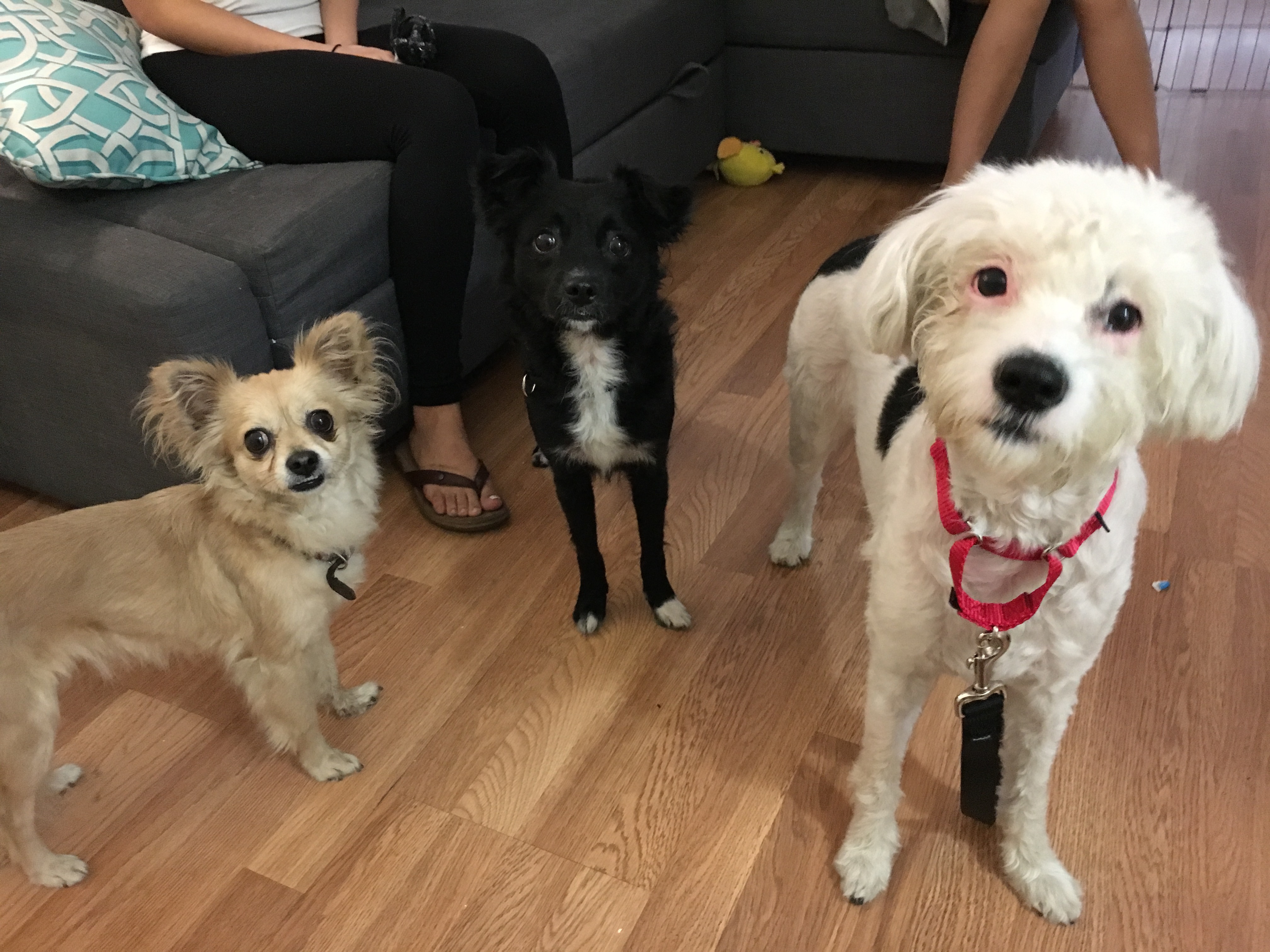How to Use Counterconditioning to Stop a Dog From Nipping People
By: David Codr
Published Date: January 11, 2018
For this Santa Monica dog training session we worked with Zoe, Milie and Milo teaching these 3 dogs some basic commands to help them feel less anxious and how to use counterconditioning to stop dogs from nipping people.
The dogs were quite animated and upset when I arrived for the session. The guardian had the girls on a leash due to their penchant to nip and bite new people.
When we sat down to discuss the dog behavior problems, I learned the dogs had no rules, were petted on demand or when they displayed many unwanted behaviors; jumping up, barking, nudging, pawing, etc. I also discovered that the dogs didn’t know any real commands except to not potty in the house.
Dogs have self esteem and when they don’t know any commands or tricks, its hard to gain confidence. One of the problems these dogs had was insecurity which can be helped by teaching the dogs some new tricks and commands.
Teaching a dog to sit is pretty easy and is the foundation for most dog obedience training. Actually one of the ways most trainers teach a dog to ask for things is to sit. However, sitting puts a dog into a more subordinate posture and can be a way of saying I’m challenging you less. Because these dogs did not see me or any human as an authority figure, training them to sit was more challenging than usual.
We shot a video of the technique with the trio of dogs, but since they were all over the place, Here is a link to a video that shows me training a dog to sit (and some other basic commands) who is less anxious and not at all reactive.
Id like to see the guardians practicing this exercise with each dog separately for 1-2 minutes, at least 3 times a day. These dogs are WAY behind on skills and behavior development and the guardian is going to need to get much more aggressive with her training schedule otherwise the barking, nipping and other unruly behavior will never stop.
I suggested some rules and ways to enforce them which will be important for the dogs to start thinking of the humans as the authority figures. Enforcing rules consistently and with good timing (within 3 seconds) will be HUGELY important. If the guardians use the hiss to disagree too late (after the dog has broken the rule), its harder for the dog to learn.
As the dog’s guardian travels for work, her room mate is left to care and supervise the pack. But because Zoe snaps at anyone who tries to touch her without her consent, attaching a leash to take her on walks was difficult to say the least.
I showed the room mate how to go slow and use counterconditioning to build up trust and a positive association with that action. It only took a about a minute and a half before the guardian was able to attach the leash to Zoe, without being nipped by her.
This was a beautiful example of the power of positive dog training. Before we started, the dog was trying to bite anyone who reached for her. After a few moments, she was calm and comfortable with the same action.
By repeating the action over and over in small steps, and waiting for the dog to get comfortable before asking for more, Zoe was able to help us understand what she needed. When we listened to her, the end result was success.
I will say I am concerned about how reactive these dogs are. These behaviors are a result of under socialization, insufficient exercise, lack of rules and structure and use of outdated corrective responses. Its hard to not use these methods when your dogs don’t listen, follow your lead of respect you.
Hopefully the guardians can get into the habit of using the Escalating Consequences to disagree with unwanted actions and behaviors. Or preferably, distract, correct or warn the dogs before they break a rule or engage in an unwanted behavior. Preventative leadership is highly effective when done properly (positively)
Because of how unbalanced the dogs were, we made far less progress than I am accustomed to. While Im able to solve most nuisance problems in only one visit, this is the first time I finished a session knowing that a return visit was absolutely needed.
Id like the guardians to focus on training the dogs to sit, lay down, sit up and stand up while reinforcing desired actions and behaviors through passive training (petting after a dog does something desired). Once the dogs know how to sit on command, the guardians should start exclusively petting the dogs with a purpose. Combined with adding in some basic rules and enforcing them consistently, the humans can help the dogs stop feeling so anxious which will help reduce other unwanted behaviors like nuisance barking.
To help the guardians remember what we covered, we shot a roadmap to success video that you can check out below.
Categorized in: Dog Behavior




